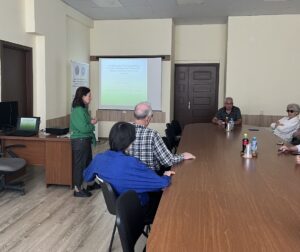Polymer composites have been obtained based on various thermoplastic and thermosetting polymers (polyethylene, polypropylene, polyethylene terephthalate, epoxy resins). Finely dispersed powders of minerals common in Georgia (andesite, Sachkhere quartz sand, bentonite, dolomite, Occam slag and diatomite) have been used as fillers, as well as organic fillers (wood flour, sawdust, leaves and needles of various plants). We have studied the physical-mechanical, chemical, hydrophobic and thermal properties of the obtained composites. It has been experimentally established that their properties essentially depend on the type and concentration of the filler. A material with the best properties has been identified for a certain amount of each filler.
In order to improve the properties of the composite material, the method of modifying minerals with a low-molecular organic silicone mixture - ethyl silicate has been used.
It has been established that all properties of composite materials are significantly improved when the fillers are modified with an organosilicon mixture - ethyl silicate. Composites with modified minerals show higher compatibility of components than the same composites filled with unmodified minerals. This factor is due to the so-called "Buffer" zones formed by silane molecules between the filler grains and the homopolymer macromolecules. Due to this, the modified filler has a stronger contact with the polymer matrix than the unmodified filler. The compatibility between the filler grains and the polymer macromolecules is strengthened, which leads to an increase in the physical-mechanical and thermal properties of the composite material. Ethyl silicate, by enhancing the compatibility of the ingredients, reduces the fragility of the composites and the formation of defects in the material, which reduces the water absorption of the composites. The hydrophobic properties of polymer composites are quite high, the water absorption of the composites does not exceed 1.5%.
Polymer composites with binary (double) fillers, such as andesite/diatomite, andesite/Occam slag, etc., have also been obtained. At a certain ratio of binary fillers, a “synergistic effect” occurs, which is one of the reasons for increasing the physical-mechanical and thermal properties of the composite material.
Composites with modified binary (double) fillers show higher component compatibility than the same composites filled with unmodified fillers and, consequently, more improved performance properties.






